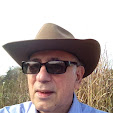So why, one might ask, is poetry more effective than prose in this regard?
I was enlightened by comments spoken by Rabbi Gidon Shoshan who declares in G-d's Poem that the text of the Torah (arguably the most read book in both the original and in translation) "is not prose, but poetry. While prosaic writing is deliberate, detailed and thorough, poetry is concise, choice and laden with allusion. A poet does not write all that he wishes to communicate but, rather, uses the power of language and brevity to encapsulate, in limited words, all virtually unlimited ideas." (italics mine)
What he is saying is so profound. The poet, in my opinion, is a master of words. He chooses words that resonate with meaning, many meanings which allude to many ideas and so what he writes can be interpreted in many different ways.
King David praising the Lord with his Harp
Illustrator: Richard Andre, London, 1884
He is in tune with inner rhythms, that akin to music, can not be expressed in one note, but many notes. Recall that the psalms of David were composed to be sung to the accompaniment of the harp. The classic epics, such as the Iliad and the Odyssey were also written to be sung.
And since we each have individual sensibilities, each one of us as reader/listener can and will have our own unique response(s).
The poet, in my opinion, makes the unknowable knowable, the impalpable palpable. He takes abstruse, complex ideas and feelings and chooses words and rhythms to share conflicts, paradoxes, ironies and emotional states--that are hard to articulate in simple prose.
To write in simple prose is limiting, dull and boring while poetry opens the mind and soul to multiple unlimited feelings and thoughts that need to be communicated.
This is why, reciting, understanding and discussing poetry lends itself to unraveling, the confusing-- often tormenting-- complex of emotions experienced by student medical professionals as they come in contact for the first time with real life threatening diseases afflicting their patients.
Indeed, before one can be an empathetic care-giver to those experiencing pain and suffering, one must first deal with one's own emotions.
In forthcoming article(s), I will explore how poetry discussions are helping to germinate the seeds of empathetic, humanistic medicine.




